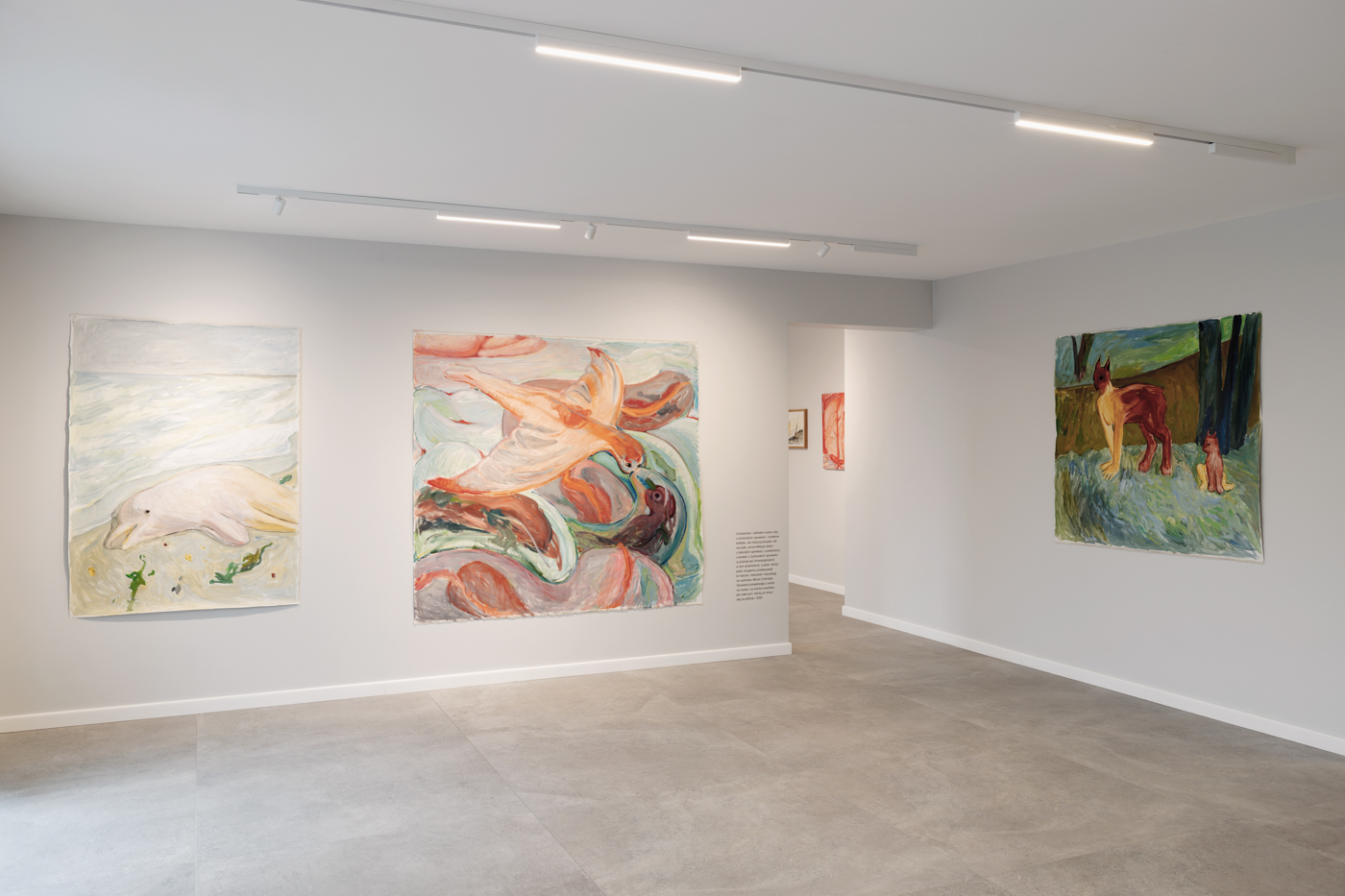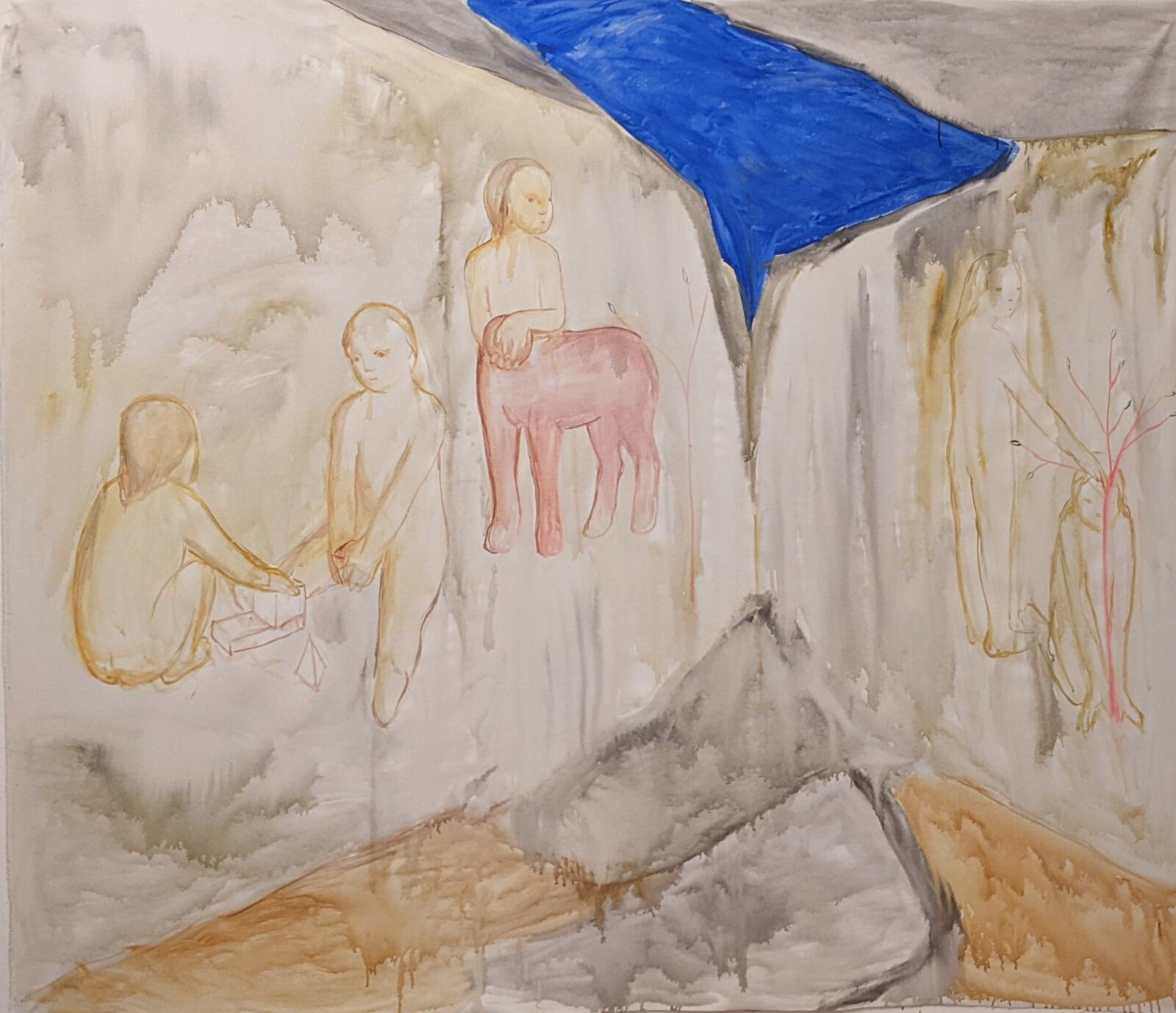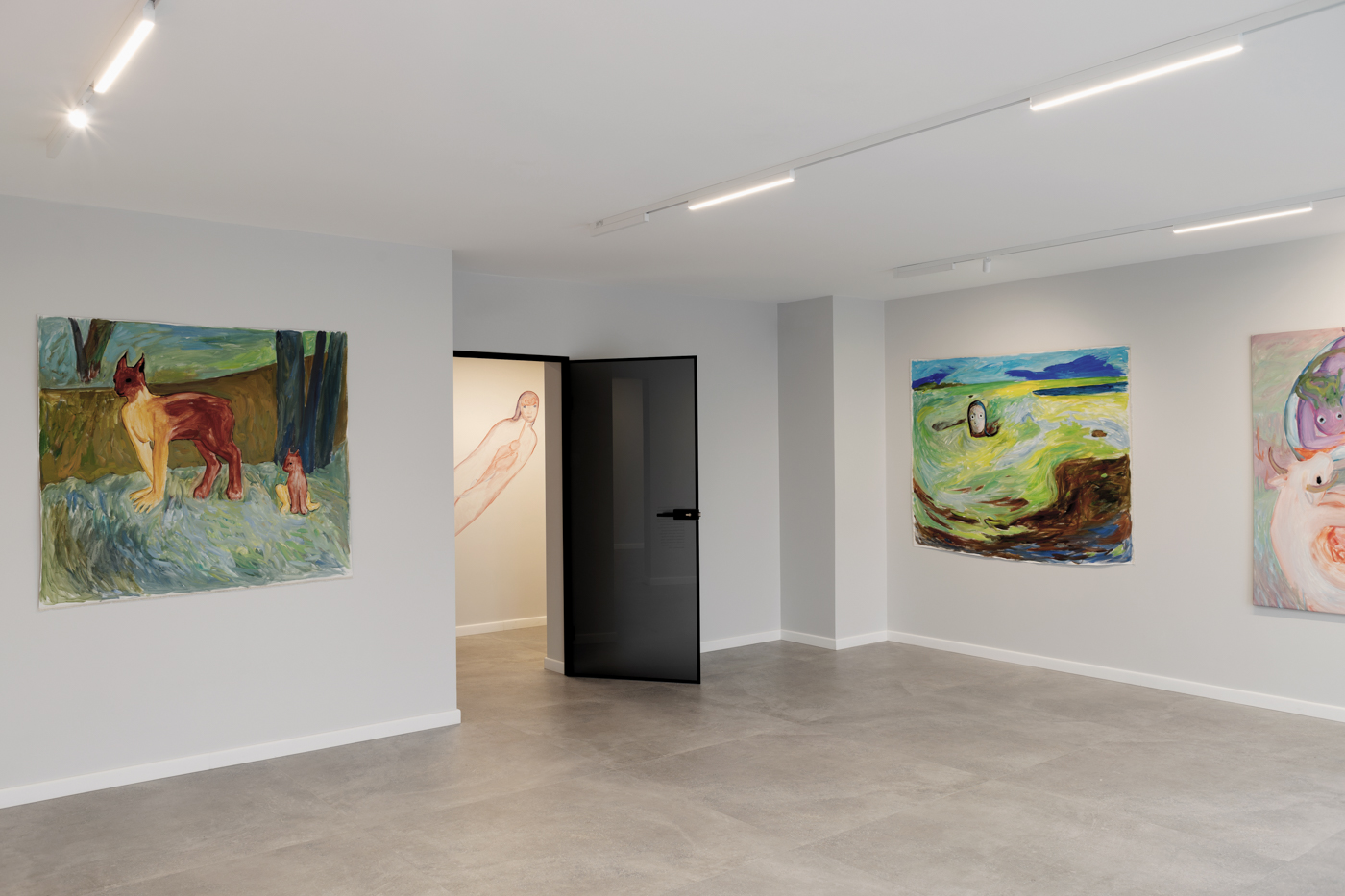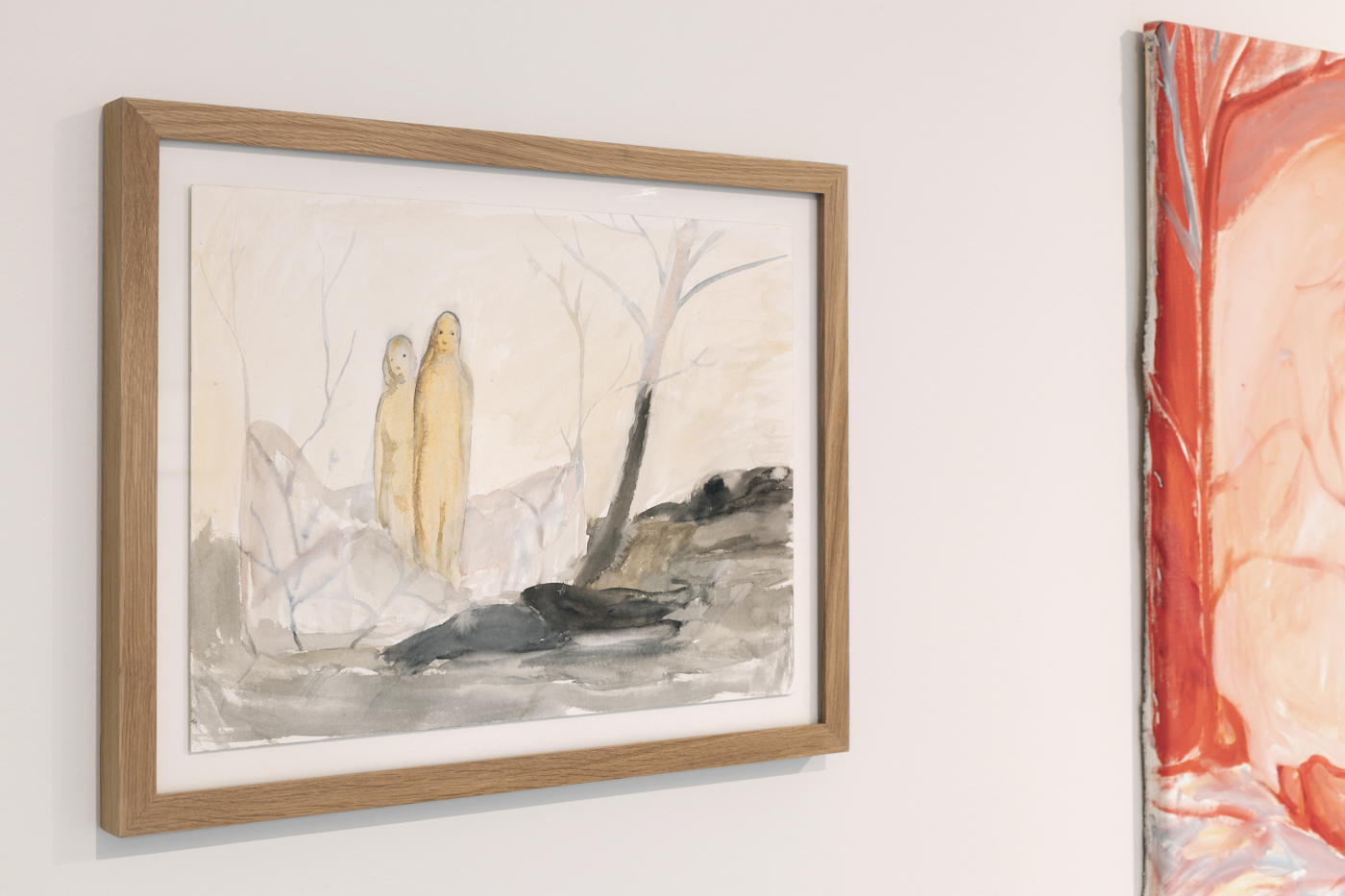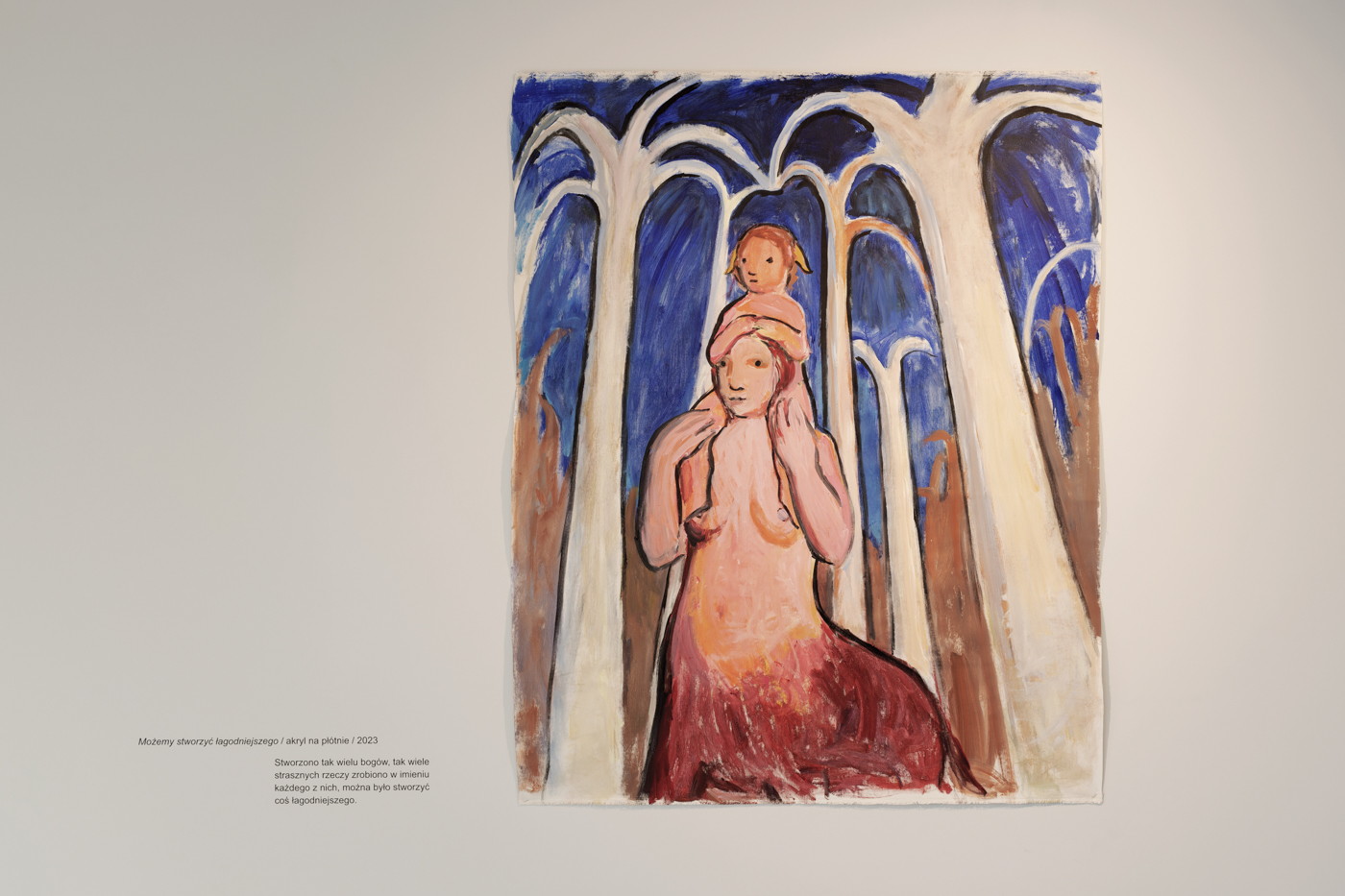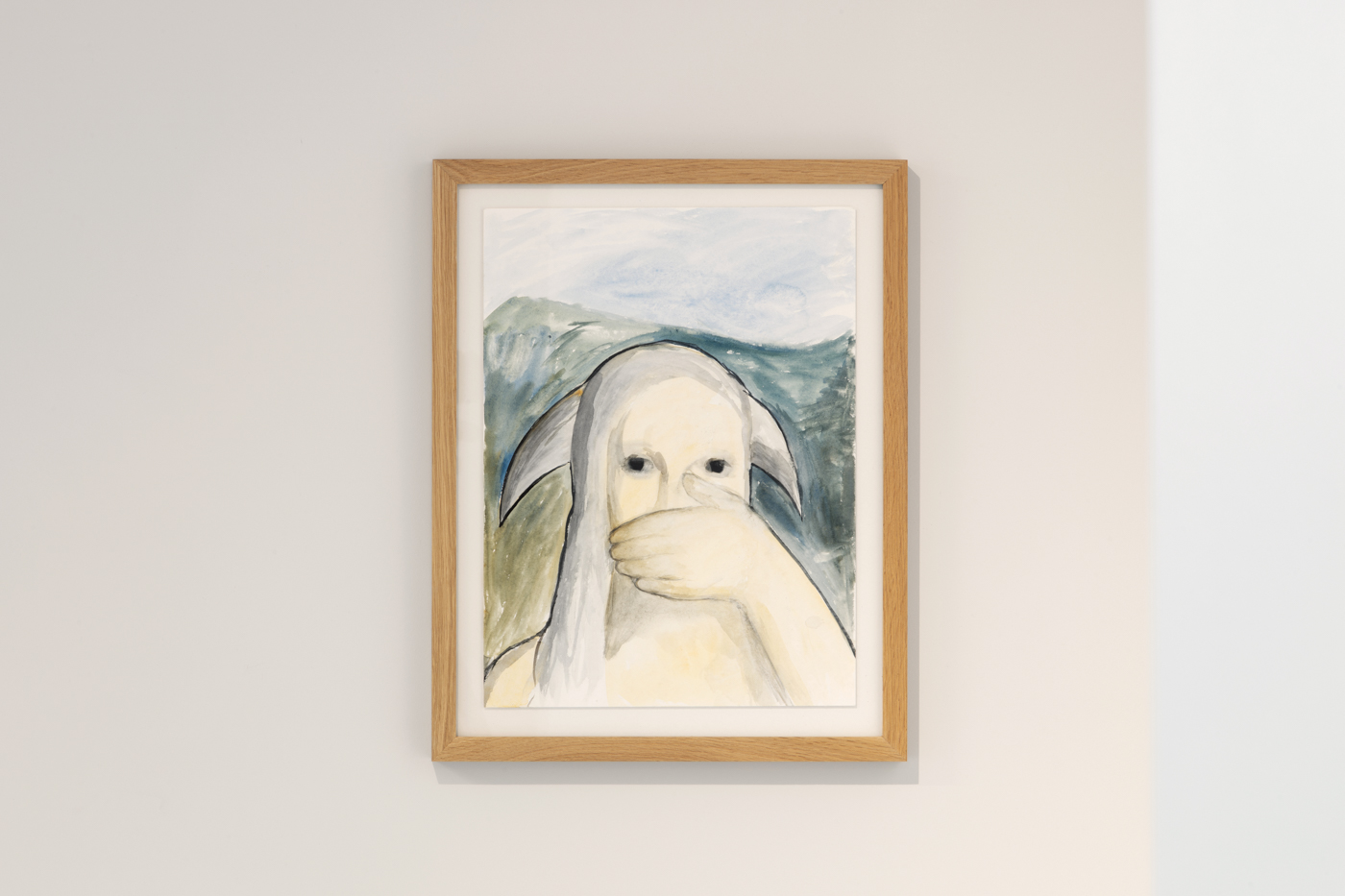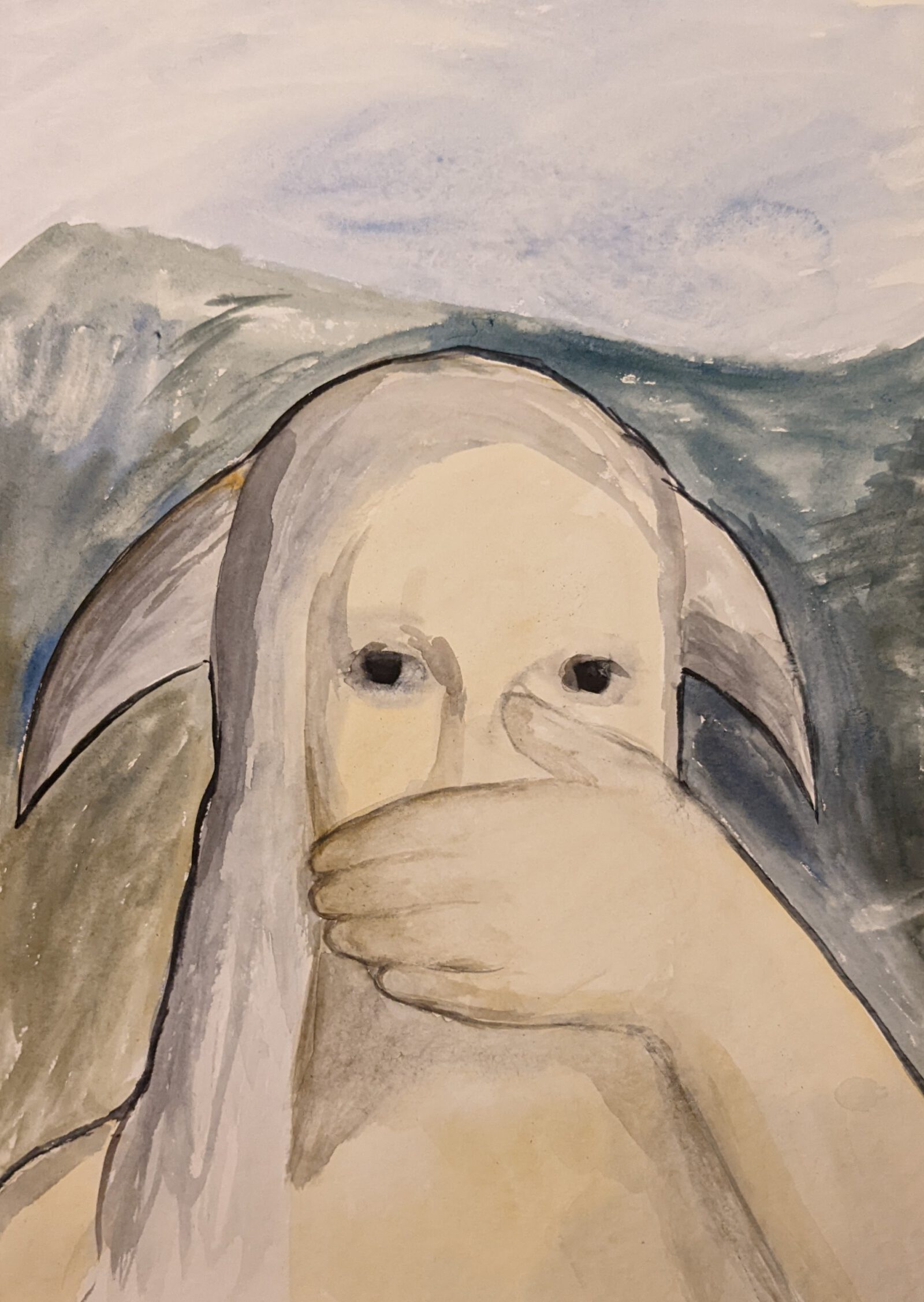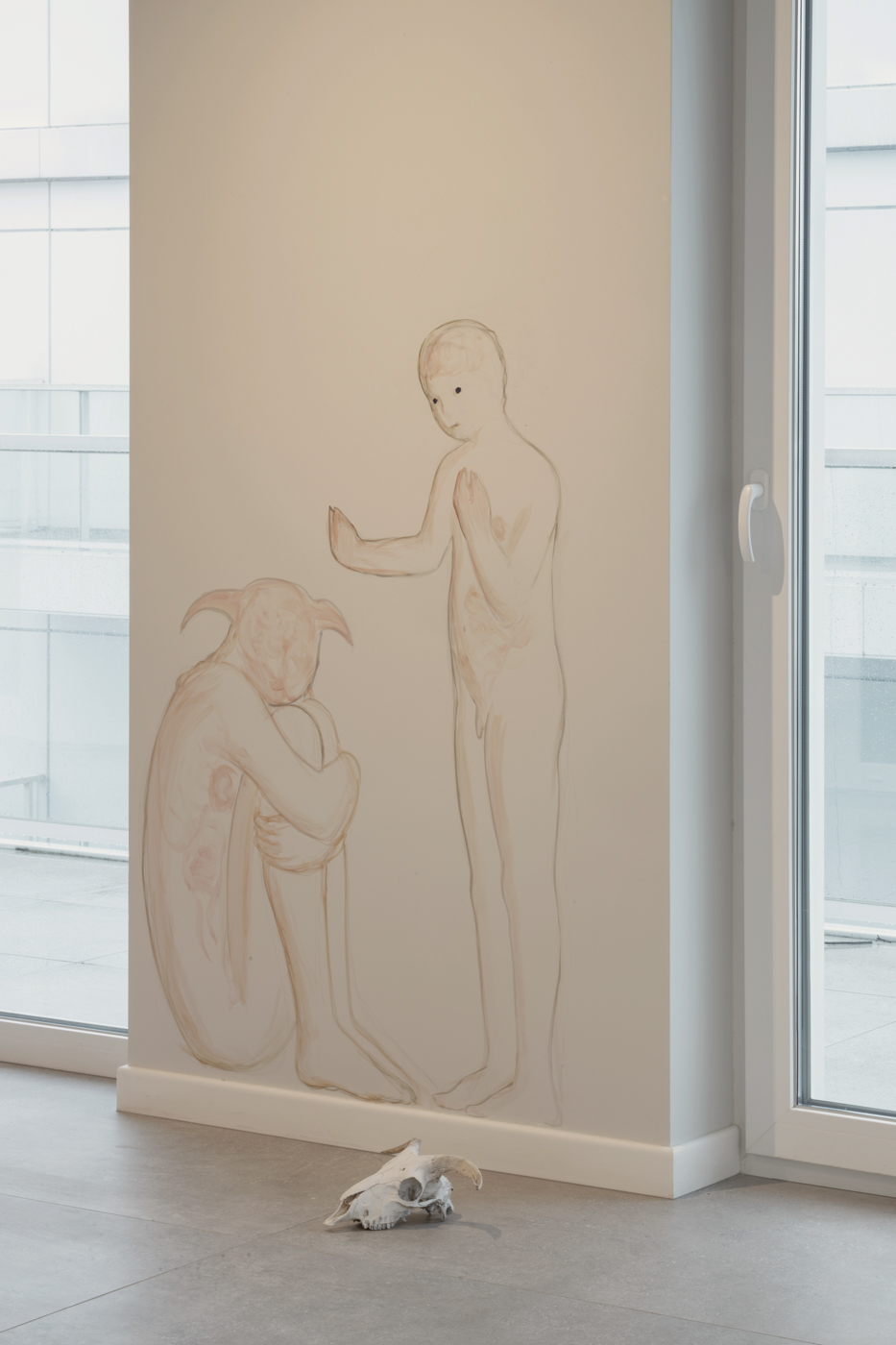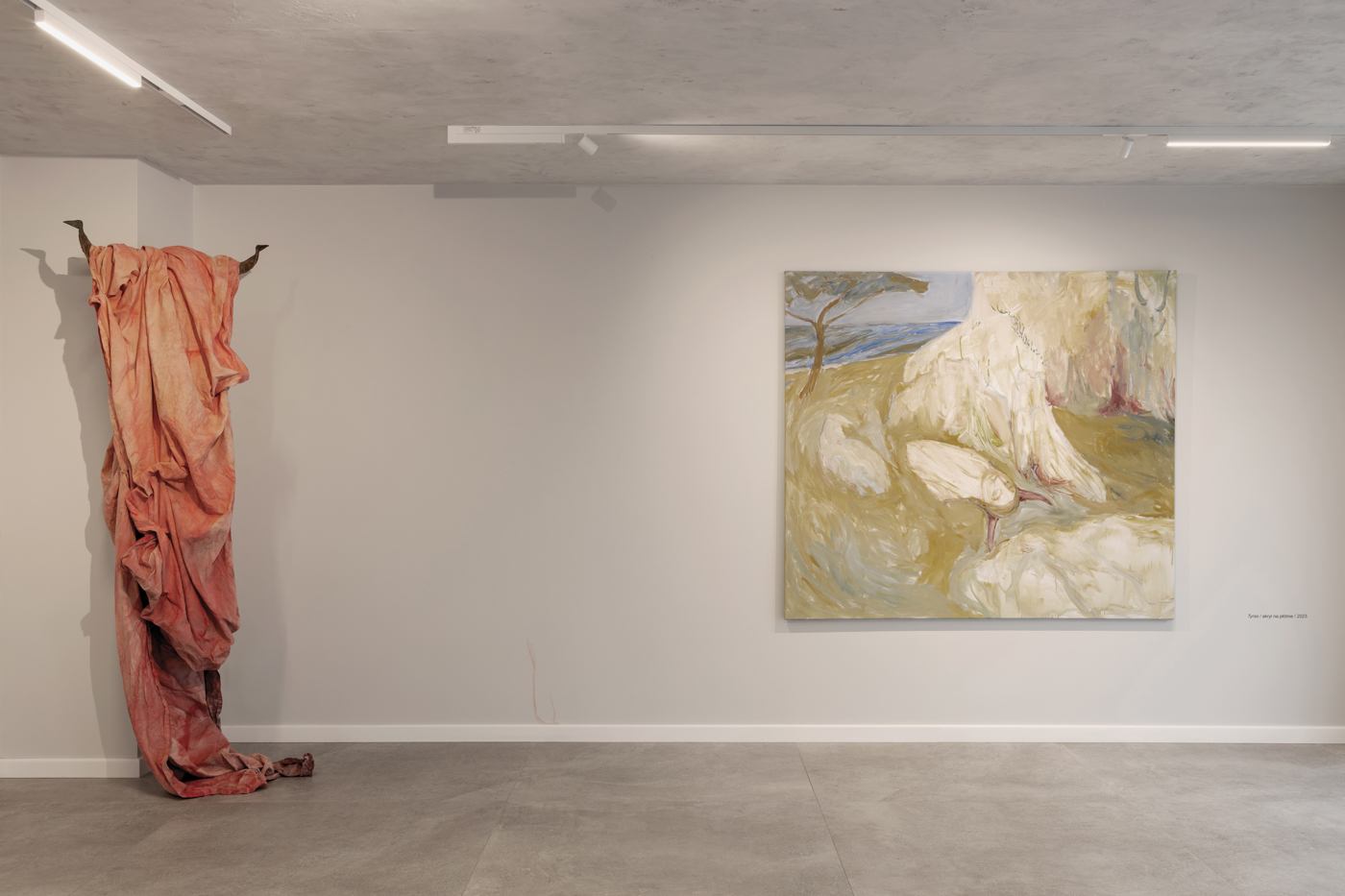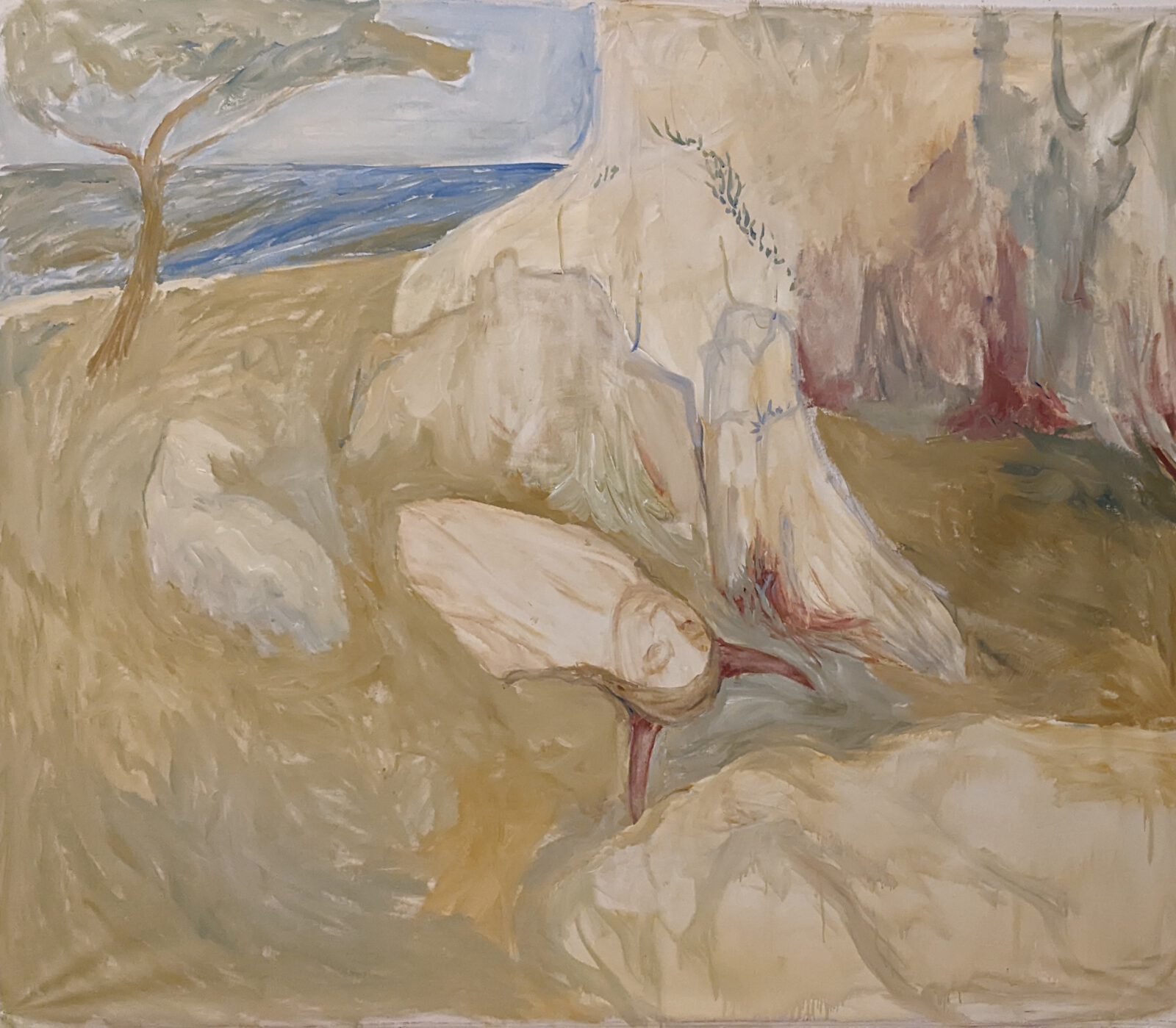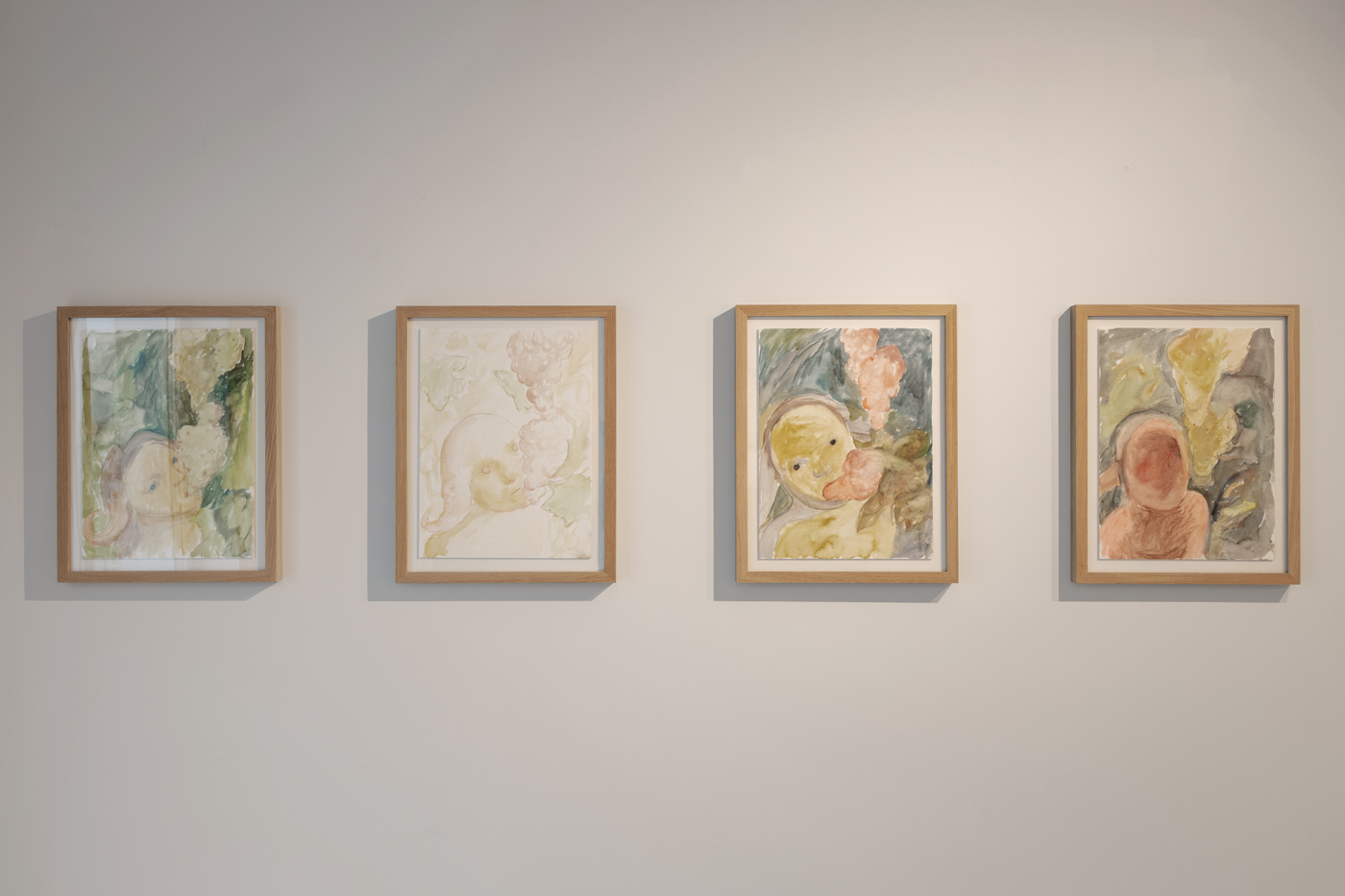Pierwsza solowa wystawa Kateryny Lysovenko w Krupa Gallery prezentuje nowy cykl prac, ukazujący ważny przełom w jej twórczości.
Kateryna Lysovenko konstruuje swoje prace tworząc siatkę znaczeń ukazywanych za pomocą szerokiej gamy odniesień: od antycznej mitologii, tropów i motywów, do ideologii i współczesnych wydarzeń, oraz tego, jak są one reprezentowane za pomocą obrazu. Artystka często odnosi się do konkretnych, najbliższych jej zdarzeń i tematów, czerpiąc z doświadczenia osób z Ukrainy, jednak jej prace poruszają bardzo uniwersalne problemy i dotyczą mechanizmów, które kształtują życie na całym świecie.
ruiny – pomagamy im odrastać
Na wystawie Tam, gdzie ruiny rosną jak kwiaty albo dziecięce ciało Kateryna Lysovenko nawiązuje do wielowarstwowej historii miasta Tyras – przechodzącego przez wieki z rąk do rąk. Od szóstego stulecia przed naszą erą, gdy Grecy założyli tam kolonię, miasto i broniąca go forteca, zmieniały nazwę wielokrotnie. Asprokastron w średniowieczu, łacińskie Album Castrum, rumuńska Cetatea Albă, turecki Akkerman, ukraiński Bilhorod – to tylko niektóre nazwy, zwykle oznaczające ‘biały zamek’. Kolejne mury wznoszone były na fundamentach twierdz poprzedników. Jednocześnie miejsce pozostawało “swoje”, “tutejsze” i formowało tożsamość jego mieszkańców. Ideologie polityczne, którymi wspierane były kolejne podboje, okazały się z tej perspektywy tylko pożywką dla murów.
W nowym cyklu prac Lysovenko skupia się na tożsamości miejsca i ciele miasta, którego ucieleśnienie jest tutaj gestem zarówno ideowym, jak i malarskim. Artystka odwraca logikę podporządkowania by dać podmiotowość temu, co pozostaje w nieustannym stanie zagrożenia i niepewności. O ruinach mówi, że pomagamy im odrastać.
liryka, nie epika
Kolejne prace na wystawie ukazują znaczącą zmianę, jaka zachodzi w malarstwie Kateryny Lysovenko. Przepracowywanie poszczególnych tropów i zmiany ról w jakich ukazywane były poszczególne elementy systemu symbolicznego, wywodzącego się jeszcze z czasów antycznych, do tej pory pozwoliły artystce na podważanie logiki przemocy. W nowych pracach Lysovenko idzie o krok dalej – wyzwala się z sytuacji w której Inny, mimo, że już bezpieczny, wciąż nie jest wolny od spojrzenia Normalnego. Na wystawie możemy obserwować, jak ta perspektywa zanika i zostaje zastępowana punktem widzenia podmiotu oraz jego własną narracją. Opowieści zawarte w obrazach nie mają być podporządkowane wielkiej historii, lecz osobistej poetyce. Zmiana ta odbija się również w warstwie malarskiej – linearne, idealizujące formy z wcześniejszych obrazów ustępują miejsca cielesności i materialności.
Kateryna Lysovenko jest ukraińską artystką pracującą w Wiedniu. Posługuje się przede wszystkim malarstwem, korzystając również z rysunku, tekstu i malarstwa monumentalnego.
Jej prace skupiają się badaniu relacji między ideologią a malarstwem oraz powstawaniu i funkcji obrazu ofiary we sztuce i polityce. Jednym z najczęściej używanych przez środków jest figura Innego, Obcego. Wachlarz odniesień z których korzysta rozciąga się od tradycji antycznej do współczesnych wydarzeń. Kateryna Lysovenko postrzega malarstwo, jako język, który może podlegać instrumentalizacji lub wyzwoleniu.
Od czasu pełnoskalowej inwazji Rosji na Ukrainę jej prace stały się jednymi z najbardziej rozpoznawalnych obrazów ukraińskiego doświadczenia i postawy. Jednocześnie jej refleksja historyczna i artystyczna ma charakter uniwersalny, humanistyczny.
Prace Kateryny Lysovenko znajdują się kluczowych publicznych kolekcjach, między innym Muzeum Sztuki Nowoczesnej w Warszawie, Museum of Contemporary Art w Kijowie oraz Ludwig Museum w Budapeszcie.
Brała udział w wystawach m.in. w Albertinum Staatliche Kunstsammlungen Dresden, Augarten Contemporary/Kyiv Biennale, Ludwig Museum, Stadtmuseum Berlin, Rotor, Kunstmuseum Lentos, PinchukArtCentre.



